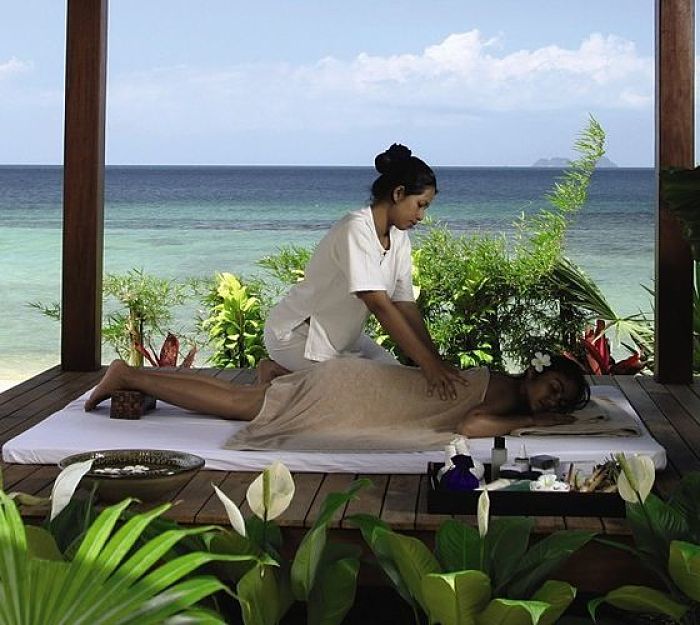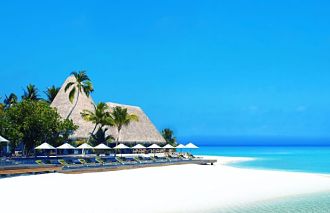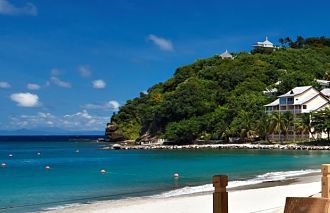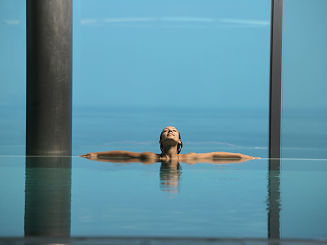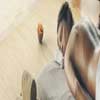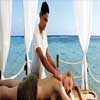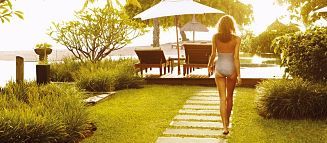Well-being on board the aircraft is very important and a few simple in-flight exercises can help you reach your destination feeling healthy and refreshed and can help reduce the stiffness and sluggish circulation that may result from sitting in one place for a long time. The possibility of circulatory problems, particularly traveller’s thrombosis, can be reduced by limiting the length of time you sit still. You are advised to carry out exercises every few hours and take a walk around the cabin at regular intervals.
SITTING CORRECTLY
Place your pillow in the hollow of your lower back to keep the natural curves of your spine. Try not to cross your legs – this will help your back and circulation. Sit upright. Avoid compressing your spine by sitting with your weight evenly balanced on each buttock. Try to lengthen your body right through to the top of your head. Keep your shoulders relaxed and try to locate the deep abdominal muscles that support your spine. Breathe in deeply, into your sides and, as you breathe out, pull your lower abdominals back towards your spine. Breathe normally now, keeping the abdominal muscles scooped.
SHOULDER CIRCLES
Sit tall, but move forward a little in your seat. Bring your shoulders up towards your ears, and then circle them back downwards. Imagine you have pencils on the tips of your shoulders and you have to draw big circle with them. Repeat this six times, then lift your shoulders towards your ears, and drop them back down six times.
NECK ROLLS
Sit back in your seat and flatten the headrest. Gently and slowly allow your head to roll one side, without forcing it, then back through the centre and slowly towards the other side. Try to keep the back of your neck long, and your shoulders relaxed as possible. Repeat the exercise several times.
STANDING
Stand tall, feet parallel and hip-width apart. Come up on your toes. Think ‘tall’ as you lower your heels back down. Bend your knees so that they are directly over the centre of each foot. Yours heels should stay down, and your feet should not roll in or out. Try not to stick your bottom out to tuck it under. Slowly straighten your legs and return to start position. Repeat the exercise ten times.
ANKLE CIRCLES
Sit tall in your seat. Place the pillow under your right thigh, just above the knee. Keep your weight even. Now rotate your right foot around, keeping the whole keg as still as possible. Make ten circles in both directions with each foot.
CALF EXERCISE
Still sitting tall, take your foot back underneath the seat a little. Keeping your foot flat, push the toes and ball of your foot into the floor, hold for the count of five, then release. Now push your heel into the floor, for the count of five, then release. Repeat these two actions with the knee at a right angle and with the leg stretched out a little. You should feel the work deep in your calf.
TIPS FOR TRAVELERS
BEFORE THE FLIGHT
- After checking in, take a stroll around the terminal.
- Avoid heavy meals.
- Apply a good moisturiser to keep skin feeling healthy.
- Moderate your intake of alcohol, tea and coffee the day before you are due to travel.
- Wear loose, comfortable clothing
DURING THE FLIGHT
- Eat a light meal and drink plenty of water
- Moderate your intake of alcohol, tea and coffee.
- Watch the Wellbeing video shown after take-off and tune into Wellbeing audio channel for a soothing soundtrack on your journey.
- Remove contact lenses before sleeping.
- Every few hours, stretch your arms and legs and carry out the exercise above.
AFTER LANDING
- Take a gentle stroll, then put your feet up and relax.
Exercise caution: The exercises outlined above are appropriate for most passengers. However, do not attempt to undertake any activities that are contrary to your doctor’s advice. Should you feel unwell during the exercise, stop immediately and contact a member of cabin crew.



